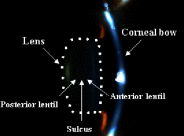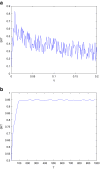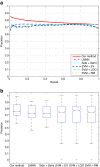A novel similarity learning method via relative comparison for content-based medical image retrieval
- PMID: 23563792
- PMCID: PMC3782604
- DOI: 10.1007/s10278-013-9591-x
A novel similarity learning method via relative comparison for content-based medical image retrieval
Abstract
Nowadays, the huge volume of medical images represents an enormous challenge towards health-care organizations, as it is often hard for clinicians and researchers to manage, access, and share the image database easily. Content-based medical image retrieval (CBMIR) techniques are employed to facilitate the above process. It is known that a few concrete factors, including visual attributes extracted from images, measures encoding the similarity between images, user interaction, etc. play important roles in determining the retrieval performance. This paper concentrates on the similarity learning problem of CBMIR. A novel similarity learning paradigm is proposed via relative comparison, and a large database composed of 5,000 images is utilized to evaluate the retrieval performance. Extensive experimental results and comprehensive statistical analysis demonstrate the superiority of adopting the newly introduced learning paradigm, compared with several conventional supervised and semi-supervised similarity learning methods, in the presented CBMIR application.
Figures












Similar articles
-
Endowing a Content-Based Medical Image Retrieval System with Perceptual Similarity Using Ensemble Strategy.J Digit Imaging. 2016 Feb;29(1):22-37. doi: 10.1007/s10278-015-9809-1. J Digit Imaging. 2016. PMID: 26259520 Free PMC article.
-
A framework for medical image retrieval using machine learning and statistical similarity matching techniques with relevance feedback.IEEE Trans Inf Technol Biomed. 2007 Jan;11(1):58-69. doi: 10.1109/titb.2006.884364. IEEE Trans Inf Technol Biomed. 2007. PMID: 17249404
-
Localized content-based image retrieval.IEEE Trans Pattern Anal Mach Intell. 2008 Nov;30(11):1902-12. doi: 10.1109/TPAMI.2008.112. IEEE Trans Pattern Anal Mach Intell. 2008. PMID: 18787239
-
Content-based 3D object retrieval.IEEE Comput Graph Appl. 2007 Jul-Aug;27(4):22-7. doi: 10.1109/mcg.2007.80. IEEE Comput Graph Appl. 2007. PMID: 17713231 Review. No abstract available.
-
Structural shape prototypes for the automatic classification of 3D objects.IEEE Comput Graph Appl. 2007 Jul-Aug;27(4):28-37. doi: 10.1109/mcg.2007.89. IEEE Comput Graph Appl. 2007. PMID: 17713232 Review. No abstract available.
References
-
- Frost, Sullivan: US Data storage management markets for healthcare. Online resource: http://www.frost.com
-
- ARRS GoldMiner: Online resource: http://goldminer.arrs.org/home.php
-
- iMedline: Online resource: http://archive.nlm.nih.gov/iti/
MeSH terms
LinkOut - more resources
Full Text Sources
Other Literature Sources

